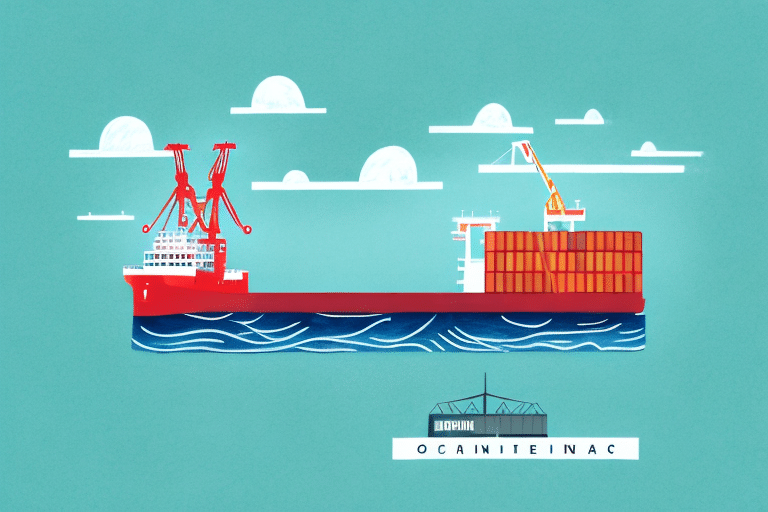Understanding Exception Shipping and How It Can Benefit Your Business
Logistics and shipping are vital to any business dealing with physical products. They influence delivery speed, inventory management, and the ability to meet delivery promises. However, shipping can also introduce challenges such as bottlenecks, delays, and increased costs. Exception shipping offers a strategic approach to mitigate these issues. In this article, we explore what exception shipping entails, how it operates, and the myriad ways it can enhance your business operations.
What is Exception Shipping?
Exception shipping is a proactive shipping strategy focused on ensuring the timely and efficient delivery of goods, even when unexpected challenges arise. Traditional shipping methods are often reactive, dealing with issues as they occur. In contrast, exception shipping anticipates potential disruptions—such as traffic, weather events, or carrier delays—and implements strategies to overcome them.
To execute exception shipping effectively, businesses must have a clear plan, reliable carrier partnerships, and robust communication channels with both teams and customers. Real-time shipment tracking allows for immediate adjustments to routes and delivery schedules, while contingency plans address emergencies. This approach not only improves delivery accuracy but also enhances overall customer satisfaction.
Implementing exception shipping can distinguish your business from competitors by offering superior shipping reliability and speed. Moreover, it can lead to cost savings by reducing the need for expedited shipping or rerouting due to delays.
Benefits of Exception Shipping
Increased Efficiency
Exception shipping streamlines shipping operations by minimizing unexpected disruptions. According to a Forbes report, businesses that implement proactive shipping strategies can reduce shipping times by up to 20%, thereby enhancing overall operational efficiency.
Enhanced Customer Satisfaction
Providing reliable and accurate shipping times boosts customer trust and loyalty. A survey by Net Promoter Score indicates that 68% of customers are likely to remain loyal to companies that consistently deliver on their shipping promises.
Reduced Costs
By minimizing delays and missed shipments, exception shipping helps businesses avoid extra costs associated with refunds, returns, and penalties for late deliveries. The McKinsey & Company report highlights that optimized shipping strategies can lead to cost reductions of up to 15% in logistics expenses.
Competitive Advantage
Offering exceptional shipping services sets your business apart in a crowded market. Companies with superior shipping reliability tend to attract and retain more customers. According to Forrester Research, businesses that prioritize shipping excellence achieve higher customer retention rates compared to their competitors.
Enhancing Customer Experience with Exception Shipping
Exception shipping focuses on exceeding customer expectations by providing accurate delivery estimates and real-time tracking. Features such as delivery notifications and flexible delivery options further enhance the customer experience. A study by PwC found that 73% of customers consider a positive shipping experience to be a key factor in their purchase decision.
By ensuring timely deliveries, especially for urgent or special occasion orders, businesses can foster customer loyalty and encourage repeat business.
Implementing Exception Shipping
Factors to Consider
- Shipping Volume: High order volumes increase the complexity of managing exception shipping. It requires scalable systems to handle large-scale operations efficiently.
- Geographical Reach: Diverse shipping locations necessitate tailored strategies that account for regional challenges and conditions.
- Carrier Relationships: Establishing partnerships with reliable carriers and negotiating favorable terms is crucial for maintaining shipping standards.
- Technology: Investing in advanced shipping management systems enables real-time tracking, route adjustments, and effective communication.
- Cost: Balancing the higher costs associated with exception shipping against the benefits is essential for sustainable implementation.
Best Practices for Managing Exception Shipping
- Develop clear processes and procedures for handling exceptions.
- Train your team thoroughly on exception shipping protocols.
- Regularly monitor carrier performance and adjust strategies as needed.
- Maintain open lines of communication with customers regarding their shipments.
- Collect and analyze feedback to continuously improve shipping practices.
Common Challenges and Solutions
- Increased Complexity: Exception shipping involves more variables than traditional methods. To manage this, ensure team members are well-trained and processes are clearly defined.
- Carrier Dependence: Relying on specific carriers can pose risks. Mitigate this by establishing relationships with multiple carriers and having backup plans.
- Higher Costs: Exception shipping can be more expensive. Implement cost-effective strategies such as route optimization and consolidating shipments to balance costs.
- Technology Adoption: Integrating new technologies can be challenging. Provide comprehensive training and support to facilitate smooth transitions.
The Role of Technology in Effective Exception Shipping
Advanced technology is integral to the success of exception shipping. Robust shipping management systems enable real-time tracking, dynamic route adjustments, and seamless communication with carriers and customers. Integration with ecommerce platforms, inventory management, and billing systems ensures a cohesive operational workflow.
- Real-Time Tracking: Provides visibility into shipment status, allowing for prompt responses to any issues.
- Dynamic Route Optimization: Uses algorithms to adjust delivery routes based on current conditions, enhancing efficiency.
- Automated Notifications: Keeps customers informed about their shipment status, improving transparency.
- Predictive Analytics: Forecasts potential delays and allows businesses to proactively address them.
Implementing the right technology not only improves operational efficiency but also ensures high levels of customer satisfaction by minimizing errors and delays.
Case Studies: Successful Implementation of Exception Shipping
Several leading companies have successfully adopted exception shipping strategies to enhance their logistics operations. For instance, Amazon utilizes sophisticated analytics and forecasting tools to manage its vast delivery network, enabling options like same-day and 1-hour deliveries in select areas. Similarly, Zappos offers free two-way shipping and guarantees next-day delivery for orders placed before a specific cutoff time, significantly boosting customer satisfaction and loyalty.
Measuring the Success of Your Exception Shipping Strategy
To ensure the effectiveness of your exception shipping strategy, it is crucial to monitor key performance indicators (KPIs). Important metrics include:
- On-Time Delivery Rate: The percentage of shipments delivered on or before the promised time.
- Delivery Accuracy: Measures how often shipments are delivered to the correct address without errors.
- Customer Satisfaction Scores: Gauges customer perceptions through surveys and feedback.
- Cost per Shipment: Tracks the total cost involved in shipping each order, including expenses related to exceptions.
- Return Rates: Monitors the frequency of returns, which can be influenced by shipping reliability.
Regularly analyzing these metrics allows businesses to identify areas for improvement, make informed decisions, and continuously refine their exception shipping strategies for optimal performance.
Future Trends and Innovations in Exception Shipping
The shipping industry is rapidly evolving with technological advancements driving new possibilities in exception shipping. Future trends include:
- Drone Deliveries: Unmanned aerial vehicles could revolutionize last-mile delivery, particularly in remote or congested areas.
- Artificial Intelligence: AI-driven predictive analytics can further enhance route optimization and delay forecasting.
- Blockchain Technology: Provides secure and transparent tracking of shipments, ensuring data integrity and reducing fraud.
- Autonomous Vehicles: Self-driving delivery vans and trucks may reduce labor costs and improve delivery times.
Embracing these innovations will enable businesses to maintain a competitive edge and meet the ever-growing expectations of customers for fast, reliable deliveries.
Conclusion
Exception shipping is a transformative strategy that empowers businesses to enhance their logistics operations, improve customer satisfaction, and maintain a competitive edge in the market. By adopting best practices, leveraging advanced technology, and continuously monitoring performance, companies can successfully implement exception shipping to meet and exceed customer expectations. As the shipping landscape continues to evolve, staying ahead of trends and innovations will be key to sustaining success and fostering long-term growth.






















